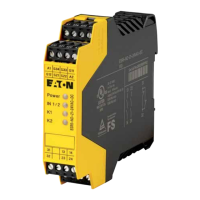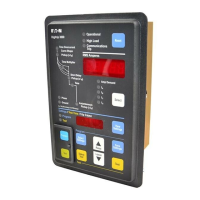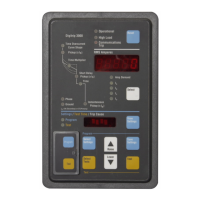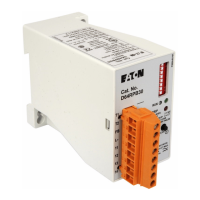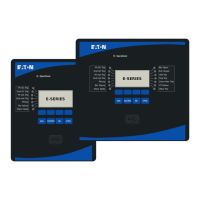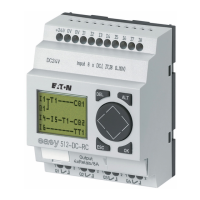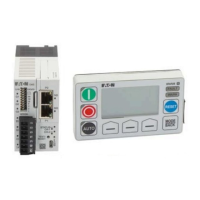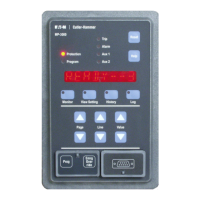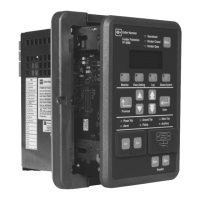I.B. 17555C
Effective November 1999
Page 6
SECTION 2: FUNCTIONAL DESCRIPTION
2-1 PROTECTION, TESTING AND
COMMUNICATION CAPABILITIES
2-1.1 RMS SENSING
Digitrip 3000 Protective Relays provide true RMS sensing
for proper correlation with the thermal characteristics of
conductors and equipment. The root mean square (rms)
value is determined by a microprocessor calculation of
discrete sampled points of the current waveform. This
root mean square value is used for the protection
response and metering displays of the relay.
2-1.2 PICKUP SETTING
A Digitrip 3000 Protective Relay pickup setting is a dis-
crete, preselected value of current used to initiate a trip-
ping action. The Digitrip 3000 has several current based
tripping functions:
• Phase inverse time overcurrent tripping - Thermal,
ANSI, and IEC Curves.
• Ground inverse time overcurrent tripping - Thermal,
ANSI, and IEC Curves. Ground selection is indepen-
dent of phase selection.
• Phase and ground short delay tripping.
• Phase and ground instantaneous tripping.
As shown in Figure 3-1, the ANSI and IEC “Curve
Shapes” are in terms of multiples of I
pu
(Pickup
Current of the CT Primary), whereas ‘short delay”
and “instantaneous” are in terms of multiples of I
n
(5A secondary of CT primary current). The thermal
curve is represented in terms of multiples of I
n
for its
curve shape, short delay, and instantaneous
settings. This must be considered in the coordination
study and in the programming of the Digitrip 3000
Protective Relay.
Example: Thermal Curves, Short Delay and Instanta-
neous settings using I
n
CT Rating = I
n
= 1200A.
Pickup Setting= 1.5
Pickup (amps)= (1 200)(1 .5)
= 1800A.
Example: ANSI and lEC curves using I
pu
CT Rating = 1200A.
I
pu
= Pickup Current = 1800A.
CT Ratio = 1200:5 (Entered as “1200”)
Actual secondary current at pickup =
7.5A = (1800/1200) x 5
2-1.3 TIME SETTING
A Digitrip 3000 Protective Relay time setting is a prese-
lected time delay initiated when a pickup point on the
long or short curve is exceeded. If the current value
drops below the pickup value, the timing function resets.
No memory is provided. If the current value does not
drop below pickup, the amount of delay before tripping
occurs is a function of the current magnitude and the time
setting. The delay can be determined from the appropri-
ate time-current curves.
2-1.4 PROTECTION CURVE SETTINGS
Curve Selection: Extensive flexibility on inverse time
overcurrent (phase and ground) curve shaping is possi-
ble with eleven available curve types. The selection and
associated result is determined by the type of curve
shape that best fits the coordination requirements (Figure
1-4, Table 2.1). Different curve shape settings can be
applied to phase and ground to maximize coordination
flexibility. The curves are discussed in more detail in
Paragraph 3-3.1.
Phase Inverse Time Overcurrent Pickup: The available
pickup settings, shown in Table 2.2, range from 0.20 to
2.2 times (I
n
).
TABLE 2.1 CURVE SELECTION
Curve Type Selection Result
Thermal It
I
2
t
I
4
t
FLAT
Moderately Inverse
Inverse
Extremely Inverse
Definite or Fixed Time
ANSI MOD
VERY
XTRM
Moderately Inverse
Very Inverse
Extremely Inverse
lEC lEC-A
lEC-B
lEC-C
IEC-D
Moderately Inverse
Very Inverse
Extremely Inverse
Definite Time
